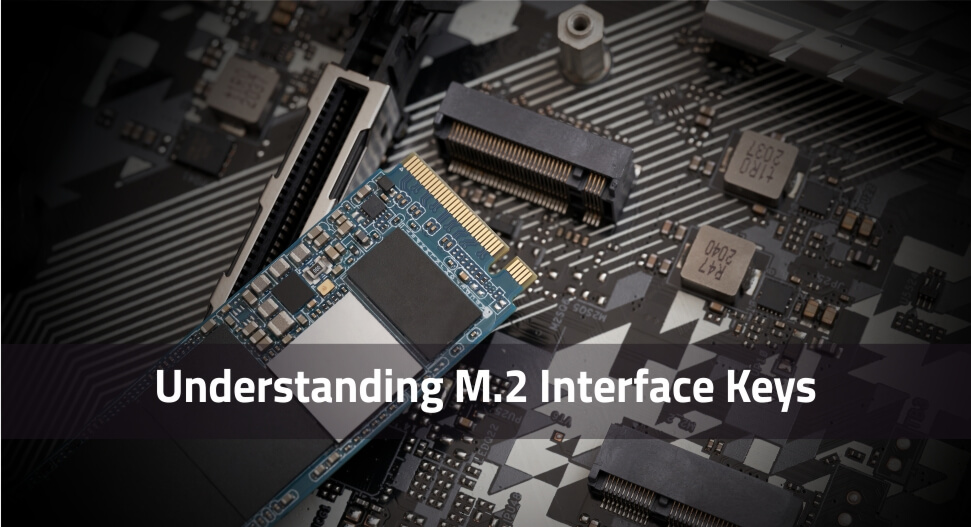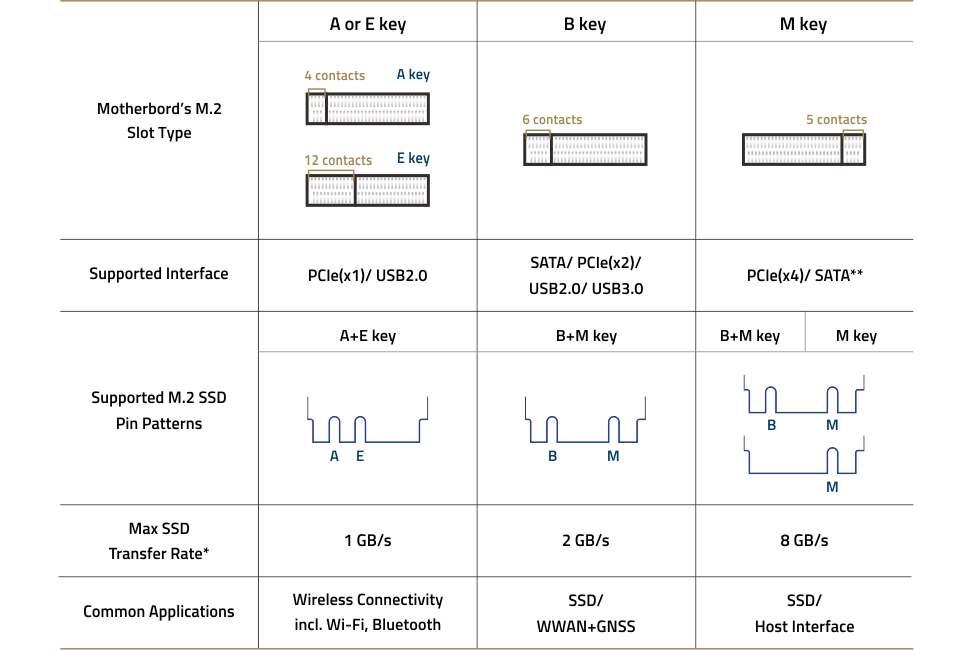- Company
- Press Center
- Understanding M.2 Interface Keys: A Quick Guide
BLOG
2024.03.29
Understanding M.2 Interface Keys: A Quick Guide
SHARE

The M.2 interface has revolutionized modern computing by enabling the seamless integration of high-speed storage solutions within a compact form factor. This article delves into the world of M.2 connectors, focusing on the various key types and their crucial role in guaranteeing compatibility and unlocking peak performance potential for M.2 cards.
Overview of M.2 Interface
M.2 stands at the forefront of internal connection standards, primarily used for solid-state drives (SSDs). Its popularity stems from its ability to support various physical dimensions and electrical interfaces within a minimal footprint, making it ideal for diverse applications.
Key Types in M.2 Cards
M.2 cards come in various key types, including A, E, B, M, A+E, and B+M key. Each key type has distinct physical notches that dictate their compatibility with different devices and applications. These keys safeguard devices and motherboards from damage by preventing incorrect module insertion, highlighting the importance of understanding key types for optimal performance. Below is a comparison of common key types found in M.2 cards:

Comparison of Different Keys
The common M.2 key types - B, M, and B+M - cater to specific interfaces and applications. Key B suits SATA, PCIe x2, USB2.0, or USB3.0 interfaces, making it suitable for storage and WWAN+GNSS expansion. Key M is tailored for PCIe x4 interfaces, facilitating high-speed data transfer, perfect for high-performance SSDs Additionally, it supports SATA interfaces, although compatibility is contingent on the motherboard's support. B+M keys can fit into either B or M key slots, offering the best versatility. Additionally, A+E keys are tailored for connectivity and expansion modules like wireless network cards and Bluetooth modules. Its design enables these cards to support both USB and PCIe x2 interfaces, ensuring broad compatibility across various applications.
Selecting the right key type is essential for maximizing performance according to individual requirements. Gamers benefit from M key’s speed, while businesses find B and M keys ideal for long-term operational flexibility. Ensuring compatibility between the M.2 component and the motherboard slot is key to achieving optimal performance without compromising system integrity.
Further reading:
Selecting the right key type is essential for maximizing performance according to individual requirements. Gamers benefit from M key’s speed, while businesses find B and M keys ideal for long-term operational flexibility. Ensuring compatibility between the M.2 component and the motherboard slot is key to achieving optimal performance without compromising system integrity.
Further reading:

